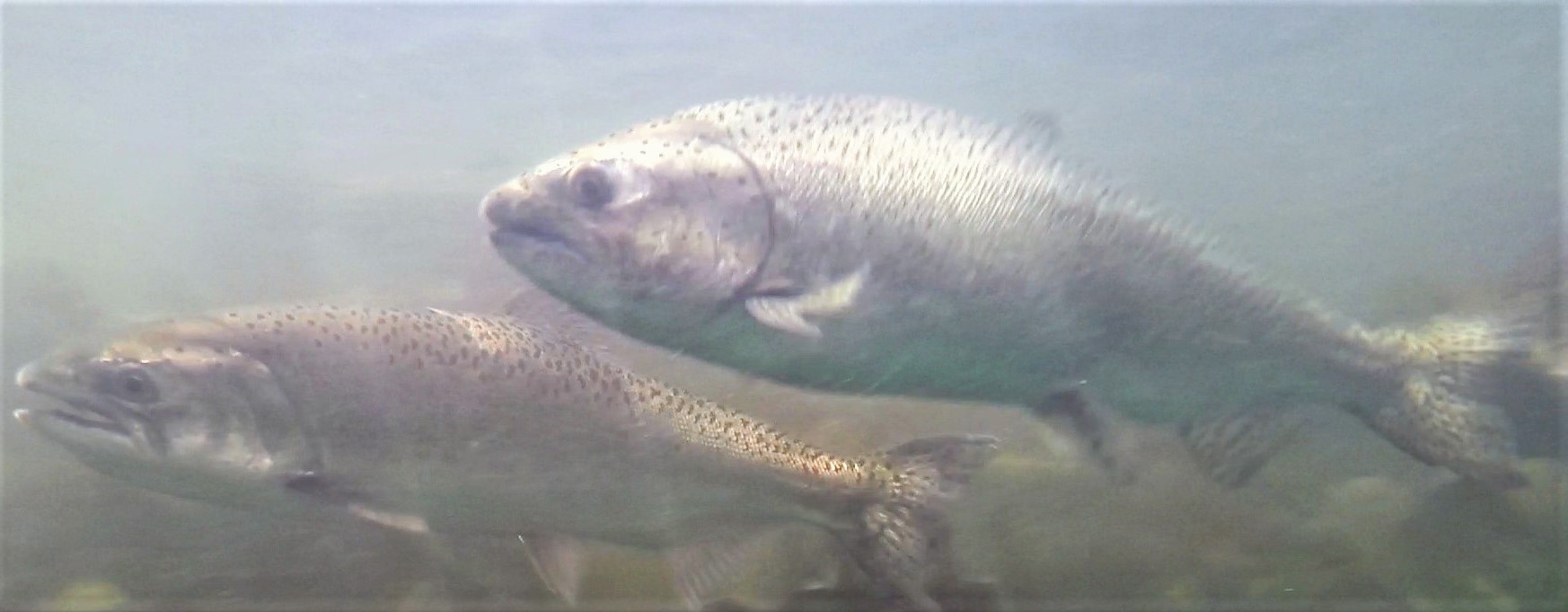
For over 60 years, the San Joaquin River saw no adult spring-run Chinook salmon make their annual migration from the ocean to spawn – the fish had been cut-off from their native spawning grounds by Friant Dam and the population died out. But all of that changed in 2019 when the San Joaquin River Restoration Program (Program) documented its first returning adult spring-run Chinook.
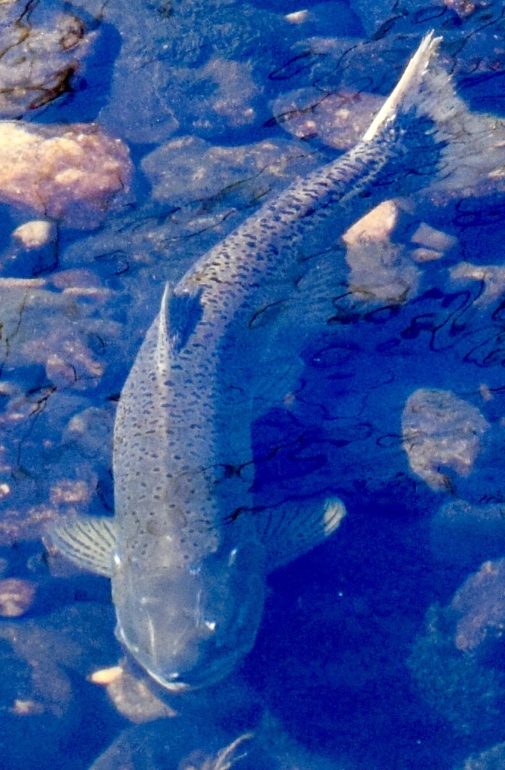
Re-establishing what was historically the largest and southernmost population of spring-run in the state is no easy task and to jump-start this new population, the Program has released millions of juvenile spring-run to the river since 2014. While supplementing fish populations by releasing hatchery-raised juveniles to rivers is commonplace fish management in California’s waterways, the Program has a unique angle for re-establishing spring-run Chinook in the San Joaquin — releasing fully-grown adults.
Even in a river system with an adequate number of adult salmon returning from the ocean to spawn, some river systems still need to rear hatchery juveniles to maintain healthy salmon populations. Climate change, drought, disease, predation, lack of habitat and other variables can impact returning salmon numbers. Fortunately, in most cases, with enough fish returning to the system, eggs/milt can be harvested from returners and used to supplement the next generation of fish.
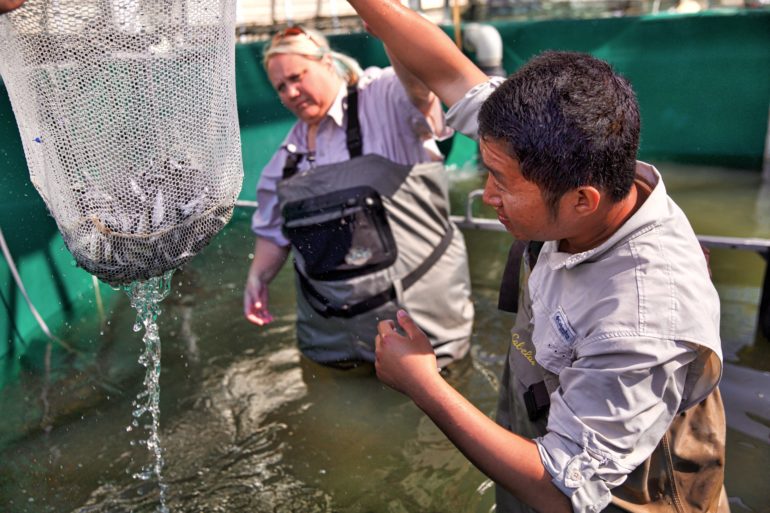
However, a critical difference for the Program is that it is re-establishing a population of spring-run Chinook – in effect, creating a population from scratch. But, because there aren’t enough adult spring-run Chinook salmon returning to the river yet to either propagate on their own or for a hatchery to harvest and supplement, the Program has two methods for creating a San Joaquin River-specific spring-run Chinook population: 1) get spring-run eggs from an existing population, in this case the Feather River, and, 2) grow spring-run to adults in a hatchery and harvest their eggs. Like other hatchery programs, the Program’s adult salmon range in age from 2 to 5 years (as they would in the wild) and have their eggs harvested and fertilized in order to create an annual population of juveniles, known as the brood year. All of this activity takes place at the Salmon Conservation and Research Facility (SCARF) in Friant, Calif. via the California Department of Fish and Wildlife (an Implementing Agency of the Settlement).
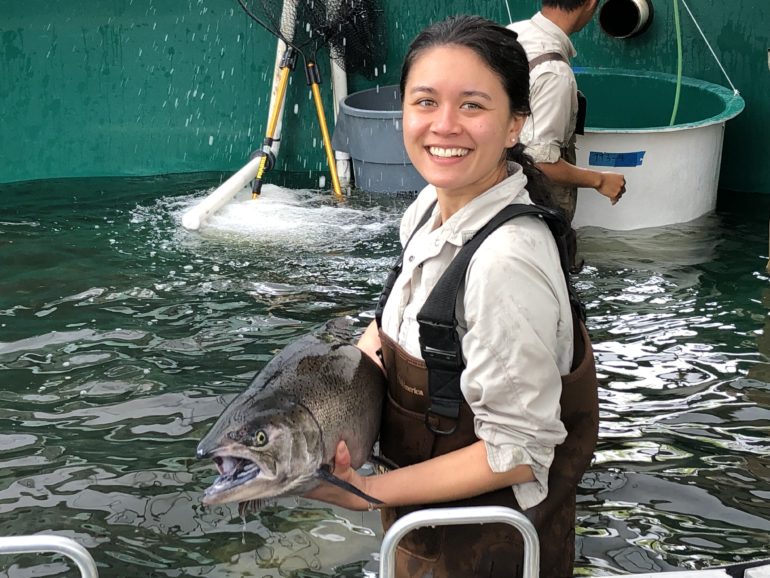
Currently, the Program raises and releases upwards of 230,000 juvenile spring-run to the river annually with expectations the number will grow to over a million fish in coming years. Based on genetics, some of the juveniles are selected to be raised to adults at the SCARF. Of those raised at the SCARF, the hatchery keeps about 100 females and 150-200 males annually for spawning. However, some of those adults, known as ancillary brood stock, are selected for release to spawn with the naturally returning fish in the river.
“Releasing adult hatchery-raised fish for spawning serves several purposes,” said Towns Burgess, the Program’s lead fish biologist. “Not only does it ensure the SCARF is not retaining more fish than it needs, but it widens the genetic pool of returning fish spawning in the river as well as provides opportunities to study how these fish use the habitat available to them.”
Spring-run are distinct from other Chinook salmon runs in that they migrate upstream in the spring and then hold, not eating, all summer in the cooler waters below Friant Dam. In general, the Program makes several adult releases each year during the spring-run holding and spawning period from April until October. By releasing hatchery-raised adults before spawning, biologists can learn more about how and where they go, and how they survive during holding. Information like this will guide river restoration efforts and help with achieving the Program’s goal of a self-sustaining, naturally reproducing spring-run population in the San Joaquin River.
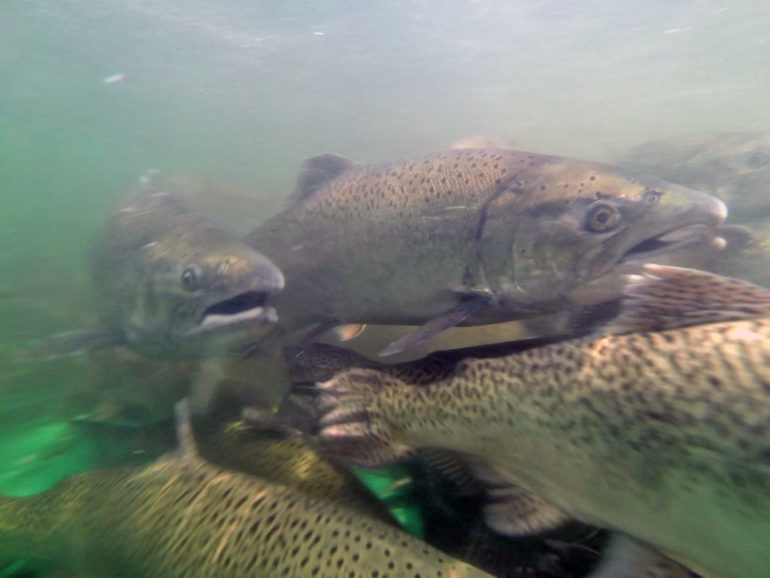
Though the number has varied somewhat from year to year, this year the Program released 150 adults to the river – 100 males and 50 females – to supplement the 74 natural returns already in the river. The most recent adult release was made at the end of August, where the fish will hold in Reach 1 with the natural returns. As with other years, this year’s released hatchery adults were age varied, replicating the diversity seen in the wild which sees multi-generations. For example, this year, 30 “jacks”, 2-year-old adult salmon that, while smaller, are sexually mature and capable of spawning, were released alongside 3 and 4-year old adult hatchery fish. Such “tactics” are found in natural populations and help to ensure that spawning occurs in varied conditions.
Burgess said the adults, in addition to spawning and ensuring another generation of salmon, also provide another pivotal component to the San Joaquin’s ecosystem: nutrients. Decades of spring-run Chinook absent from the river has resulted in a nutrient deficit within the river – nutrients that are vital to the ecosystem, “web of life,” as well as the spring-run lifecycle.
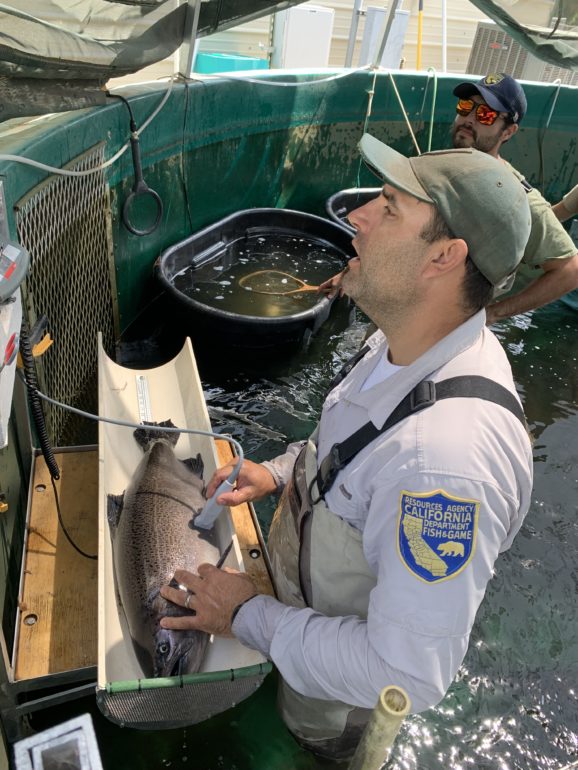
“After spawning and dying, decaying adult salmon release those ocean nutrients to the system,” said Burgess. “The lower trophic levels in the ecosystem need those nutrients which, in turn, can help to feed the juveniles as they grow.”
The hope is that most of these two adult groups of fish, those from the hatchery and those who swam upstream from the ocean, will mate. When some of the juvenile offspring of this year’s spawn are caught in rotary screw traps during fall monitoring activities (when most juveniles begin their migration out to the ocean), genetic sampling from those caught will provide early insight as to how the hatchery-raised adults mingled with the natural returns.

